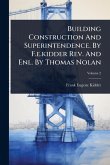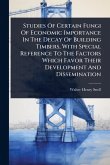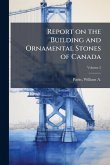"Building Construction and Superintendence, Volume 3" by Frank Eugene Kidder, revised and enlarged by Thomas Nolan, is a comprehensive guide to the principles and practices of building construction. This volume offers detailed insights into the methods and materials used in construction, making it an invaluable resource for architects, engineers, and builders. Originally published in the early 20th century, this work provides a historical perspective on construction techniques, offering a blend of theoretical knowledge and practical advice. The book covers various aspects of building, from foundations to finishes, and includes detailed illustrations and diagrams to aid understanding. It remains a useful reference for those interested in the history of construction and traditional building methods, as well as a source of foundational knowledge for modern construction professionals. This work has been selected by scholars as being culturally important, and is part of the knowledge base of civilization as we know it. This work was reproduced from the original artifact, and remains as true to the original work as possible. Therefore, you will see the original copyright references, library stamps (as most of these works have been housed in our most important libraries around the world), and other notations in the work. This work is in the public domain in the United States of America, and possibly other nations. Within the United States, you may freely copy and distribute this work, as no entity (individual or corporate) has a copyright on the body of the work. As a reproduction of a historical artifact, this work may contain missing or blurred pages, poor pictures, errant marks, etc. Scholars believe, and we concur, that this work is important enough to be preserved, reproduced, and made generally available to the public. We appreciate your support of the preservation process, and thank you for being an important part of keeping this knowledge alive and relevant.
Bitte wählen Sie Ihr Anliegen aus.
Rechnungen
Retourenschein anfordern
Bestellstatus
Storno








